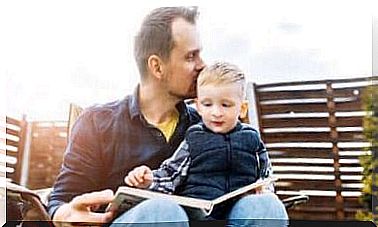Teach Your Kids Active Listening Skills

Teaching your children active listening skills from an early age is important for their proper development. Children need to learn how to speak and express themselves correctly, but they also need to learn to listen. This will help them succeed in all areas of their lives as they get older.
Learning to listen is more complex than just listening to others. When you actively teach your children to listen, you work on values like respect. In addition, you teach them other skills such as empathy, understanding, and the ability to focus and pay attention, all of which are necessary skills for listening.
What is active listening?
Active listening is a term from the field of human communication. According to many studies (Spanish link), it refers to an essential communication skill that helps to improve interpersonal relationships.

If one is able to actively listen to another, he is psychologically prepared and available to hear the other person’s message. In other words, they are willing to be respectful of what they hear. In addition, they are willing to respond with a message that is relevant to the topic of conversation.
Also, as we noted earlier, people need to develop empathy to leverage and improve their active listening skills. You need empathy to put yourself in the other person’s shoes and understand what they are saying and feeling. In addition, if you teach your children to actively listen, they must have the cognitive ability to interpret the speaker’s message.
It is also important to show understanding through certain non-verbal behaviors. For example, having a receptive posture, maintaining eye contact, and using facial expressions and gestures that show you are paying attention. Plus, you want to make sure your tone is soft and slow.
Active listening skills in children
By their very nature, children tend to get distracted when someone talks to them. They are not always able to sustain a conversation because they cannot concentrate. Instead, they will try to play, move, or do anything else that catches their attention.
Therefore, when it comes to teaching children active listening, you need to understand that it is a skill. And, like any skill, your child will need to practice it regularly before learning it.
As a parent, it is important to learn some techniques and strategies that will help when it comes to teaching your children active listening.
Teach your kids active listening skills

Through games
When teaching active listening to your children, you can use any playful and fun activity that has certain rules. They must follow the rules, wait their turn, and show respect for whose turn it is. All those aspects of games help to develop their active listening skills.
So organizing games and asking your kids to play with you is a great way to improve their listening skills.
An example is ‘the telephone conversation’ or ‘finish the sentence’. Both of these games require your child to pay attention to what the person said before them.
Teach them to avoid certain behaviors
If you want to teach your children to listen actively, you must first teach them to avoid certain behaviors, such as interrupting. It is always a good idea to emphasize that they should listen respectfully to the other person when they are speaking, without interrupting. Then, when the other person is finished with his thought, they can answer or comment on what he said.
In addition, you should also teach your kids not to put their hands in their pockets or fold their arms when talking to someone. You can explain that these behaviors can make the speaker think you are uninterested in what he or she is saying.
Active listening skills require your whole body
Another key to teaching your kids active listening skills is showing them how to manage their own bodies. For example, by teaching them to smile or to look the speaker in the eye. You can also work on aspects of good posture, such as keeping their backs straight and their heads up.
It is essential to teach children the importance of the physical aspects of a conversation. Learning how to control their bodies during a conversation is part of active listening.
Conclusion
The key to teaching your children active listening skills is to make them feel that others are actively listening to them. They want others to listen and understand with empathy. Therefore, if you want your child to learn, the best thing you can do is be a good example.
So when your child is talking, you should use the same active listening skills that you want your child to use. That means putting your phone and computer away and putting your stress and obligations aside. You should then look your child in the eye and actively listen to him or her.








